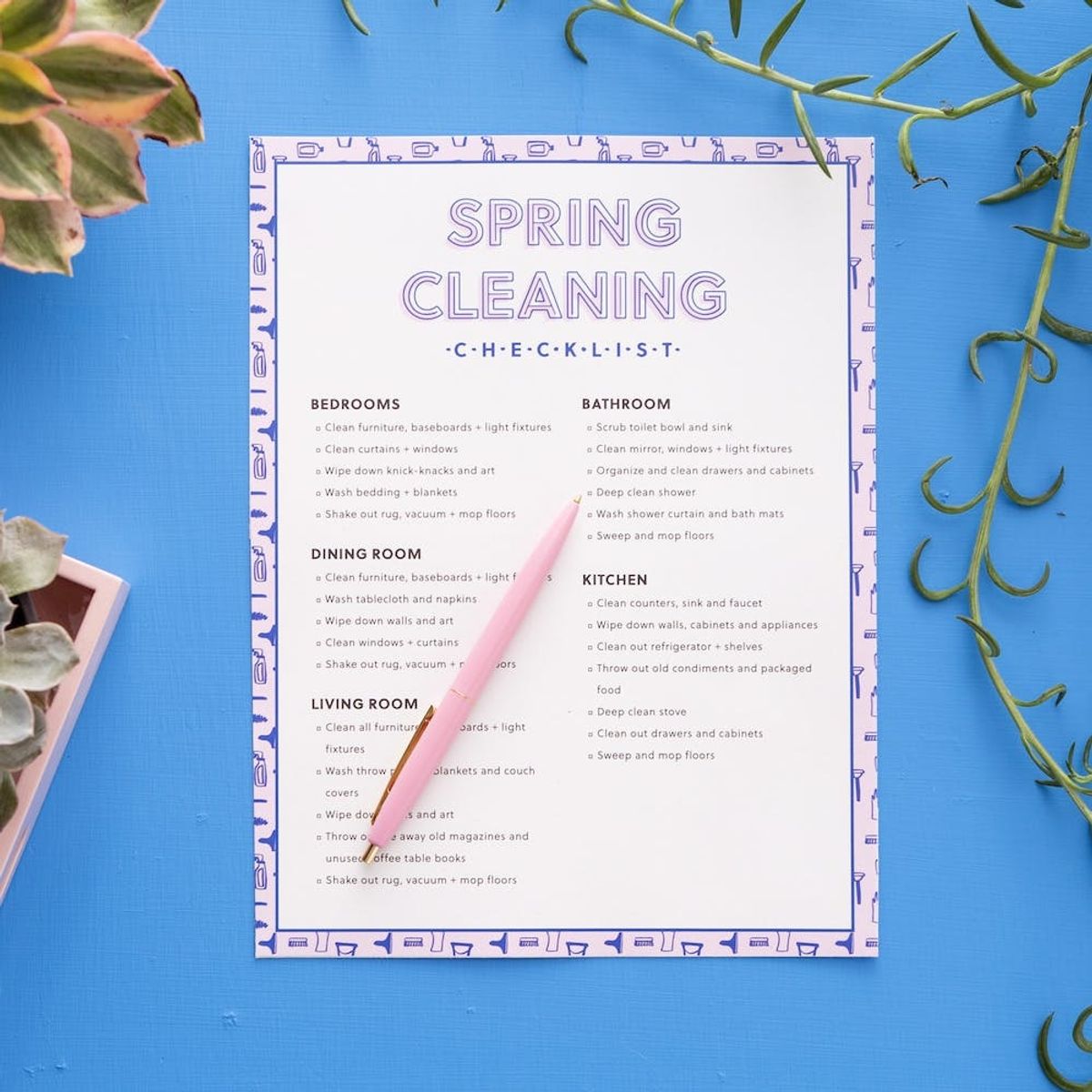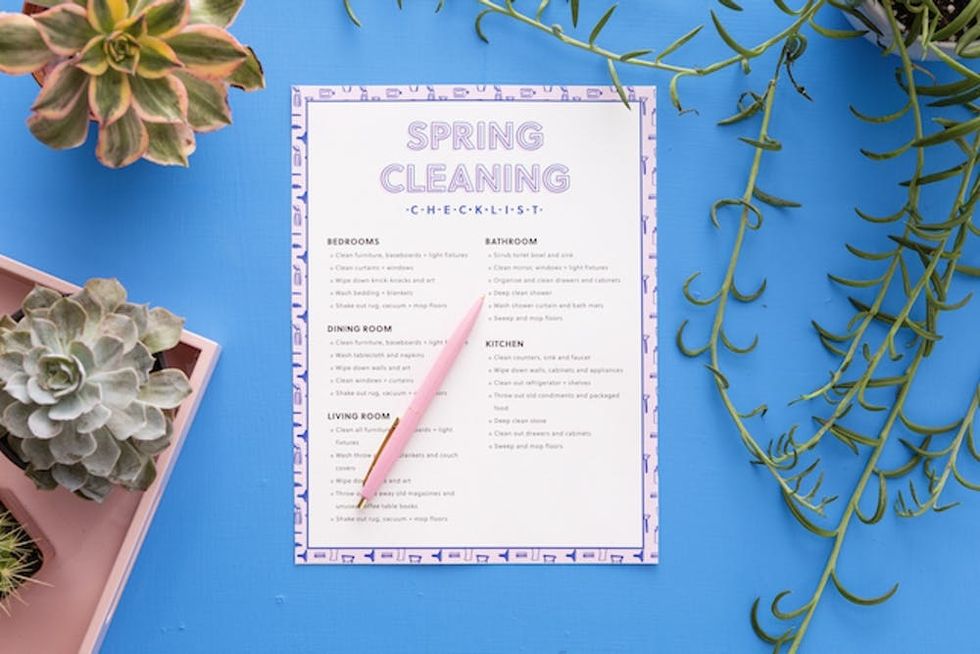Scrub it, scrub it real good.
This Free Spring Cleaning Checklist Will Make Your Apartment So Fresh and So Clean

Spring cleaning season is upon us! Before you start to get overwhelmed with all the clutter, dust bunnies and dirt you have to tackle, know that we’re here to help with the latest cleaning hacks, purging tips and organization advice. But first thing’s first: the cleaning. This week’s free Cleaning Checklist Printable will help make your home shiny and new, one box at a time. Print one out, hang it above your desk or on the fridge and get to checkin’!

Arranged by room, this checklist will help you move through your home one deep clean and super purge at a time. Pick a day each week to tidy up one room. If you don’t get through all your tasks, not to worry! They’ll still be there for you next week.

Print this Spring Cleaning Checklist out and get ready to organize that closet, clear out those cabinets and scrub that shower the best way you know how.
Happy spring cleaning, all!
We want to see how your spring cleaning is going! Share the finished result with us on Instagram by tagging us and using the hashtag #iamcreative. And be sure to check out our other awesome Free Printable Friday finds here.
Illustrations: Irene Lee
Photo Styling: Katie Bond + Cassidy Miller
Photography: Kurt Andre



















